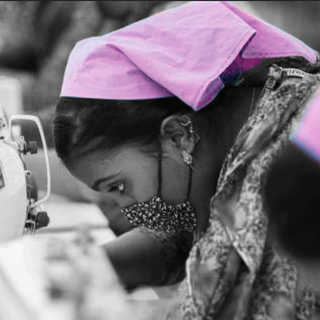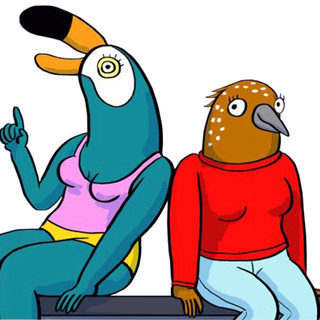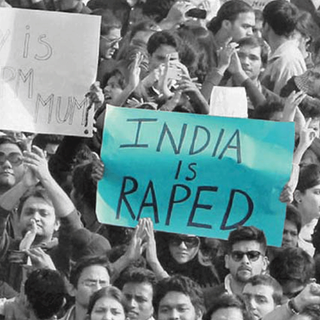
Salman Khan‑Starrer ‘Bharat’ Holds Mirror to India’s Sexist Ageism
In movies, like in society, an older woman is considered unattractive, undesirable, and only good for motherhood.

In Bharat (2019), Sonali Kulkarni is nine years younger than her on-screen son, Salman Khan. In Waqt: A Race Against Time, Shefali Shah plays Akshay Kumar’s mom, even though she is five years younger than he is. In Shahrukh Khan-starrer Zero (2018), the actress who plays Khan’s mother, Sheeba Chaddha, is seven years younger than he is. These are a few contemporary examples of a practice that dates back to the inception of Bollywood: movies unapologetically flaunt gendered age bias. The sidelining of older female actors into mother-roles effectively limits the screen time these women get and halts their careers.
This is especially jarring to watch because of films such as Mardaani (2014) and upcoming sequel Mardaani 2 (2019), starring 41-year-old Rani Mukerji, and Helicopter Eela (2018), starring 44-year-old Kajol, which have attempted to re-introduce Bollywood’s female actors who were once industry mainstays. It feels counterintuitive to herald change as an industry and appear welcoming to older female actors, when sexist gendering of them still runs rampant in movies with famous male actors. Are we to expect trickling, painfully gradual change (and I’m running out of patience), as long as Bhai‘s movies are not touched?
Why do the older female actors even need to elbow their way back into the industry again? Their male counterparts, who started off at the same time decades ago, were never made to leave. And if these men did take a break, their comeback was easier, and more readily welcomed, than the female actors’. On top of that, the main reason actresses such as Kajol, Madhuri Dixit, Sushmita Sen, and Rani Mukerji left, was mostly because they got hitched, and we all know who is considered more unappealing than an older woman; it’s a married one.
A woman’s talent is often equated to her looks or her sexual availability, especially in the movie industry. What is good acting, anyway? The entire phenomenon can be boiled down to Our perceptions of beauty and ageing inform, and in turn are informed by, the movie industry’s gendered age bias. The way Bollywood treats female actors reflects the way we condition women in society — we sexualize them at a young age, make them feel their self-worth is solely derived from their physical appearance and sexuality, and then expect them to conform to rigid societal standards of beauty.
When we see rigid, age-discriminatory standards of beauty being played out, glorified and normalized on screen, it reinforces our own biases of how women should look: 40-year-old actresses are acting as 60-year-old women on screen. While robbing the 40-year-old of age-appropriate characters, the practice also instills unhealthy notions of what 60 looks like. If all we have seen are younger actresses play-acting older female characters, how are we, as a society, supposed to know what healthy ageing looks like in a woman? And if we can’t envision that, how will we make space for older female actors? Men, meanwhile, only garner more popularity as actors — the more silver fox-y they are, the more fuckable they get, and the more roles they book.
This is not a problem that plagues only Bollywood: In Star Trek (2009), Winona Ryder plays mother to Zachary Quinto, and she’s only five years older than he is. In Alexander (2004), Angelina Jolie was cast to play Colin Farrell’s mother, and by my calculations, she would have had given birth to him as a one-year-old toddler. Examples of the movie industry’s gendered age bias might get repetitive, but that’s the point — age discrimination against female actors is rampant, and the movie industry has normalized it to an extent we don’t find as repulsive as we should.
Related on The Swaddle:
What Happens When We Sexualize Young Girls
This is perfectly satired in a Comedy Central sketch by Amy Schumer called “Last Fuckable Day.” In it, actors Tina Fey, Julia Louis-Dreyfus, Patricia Arquette and Schumer are all at a picnic, celebrating Louis-Dreyfus’s last fuckable day, which she describes as, “In every actress’ life the media decides when you have finally reached the point when you’re not believably fuckable anymore.” How do you find out if you’re not fuckable anymore, Schumer asks. The women explain signs — perhaps the poster of your new movie is just a kitchen; the title could be “whatever it takes,” or “she means well;” or you get to your wardrobe at the movie set and all they dress you in are long-sleeved sweaters, just to cover you up. Do male actors have a last fuckable day, Schumer asks. Nope, they remain sex symbols forever, Arquette quips. Can you delay it, Schumer wonders. Yes, with plastic surgery, anti-ageing creams, and a billion other products designed to make women to make women appear younger — they end up spending the same millions they could have made if they were fairly and consistently employed.
A Time survey of 6,000 Hollywood actors and actresses found that women get cast more than men do when young and starting off in the movies. At age 30, however, the trend reverses sharply, with male actors being cast increasingly until age 46 (I suspect that threshold is extended in Bollywood; Shahrukh Khan is still kicking at 53), while female actors start booking fewer roles.
The shunning of older female actors into supporting roles also makes stark Bollywood’s obsession with young women, whom it time and again pairs with male actors decades older than they are. In Bharat, for example, Salman Khan plays the romantic interest of Disha Patani, who is 27 years younger than he is. I won’t waste my time with more examples, as anybody able to look past abysmal make-up skills can identify the multitude of movies that entertain a gendered age bias.
For a female actor, there is a narrow age range at which she is considered in her prime for complex roles. Too young, and she gets put in the category of inexperienced actors incapable of playing deep, complicated characters. Too old, and she’ll get pigeonholed into the ‘mother, sister, aunt’ category, existing to supplement the male lead. This, in turn, influences the way newer, younger female actors treat their careers in the movie industry, and the toxic beauty wagon keeps trudging on and on and on…
“…I am seen to be at an age where I am not young to be cast alongside male actors who happen to be my age. At the same time I am not mature enough to play older female characters. It’s an age conundrum,” Dia Mirza, 37, of Rehna Hai Tere Dil Men fame, told IANS.
Related on The Swaddle:
Regina King Won the Golden Globes, Making a Pledge to Hire 50% Women in Her Future Productions
The feat to challenge and dismantle the movie industry’s gendered age bias, unfortunately as of now, falls on women. More female filmmakers and producers will translate to more complex roles for female actors of all ages. In Bollywood, the torch seems to be taken up by the likes of now-married, older-than-30, leading actresses Priyanka Chopra Jonas and Deepika Padukone. In Hollywood, the ardent promises of Viola Davis, Reese Witherspoon, Taraji P. Henson, and Regina King also seem to herald a changing industry — especially because these women have done the work, dealt with the casual, subtle sexism and come out on top as producers able to effect change.
Queen Sush(mita) Sen announced yesterday on her Instagram she is prepping for “ROUND 2.” She said she is getting ready to return to class. Can we make sure we give her a nice, warm welcome, Bollywood?
Rajvi Desai is The Swaddle's Culture Editor. After graduating from NYU as a Journalism and Politics major, she covered breaking news and politics in New York City, and dabbled in design and entertainment journalism. Back in the homeland, she's interested in tackling beauty, sports, politics and human rights in her gender-focused writing, while also co-managing The Swaddle Team's podcast, Respectfully Disagree.
Related


‘Tuca and Bertie’ Showcases a Raw, Messy View Into the Female Brain
